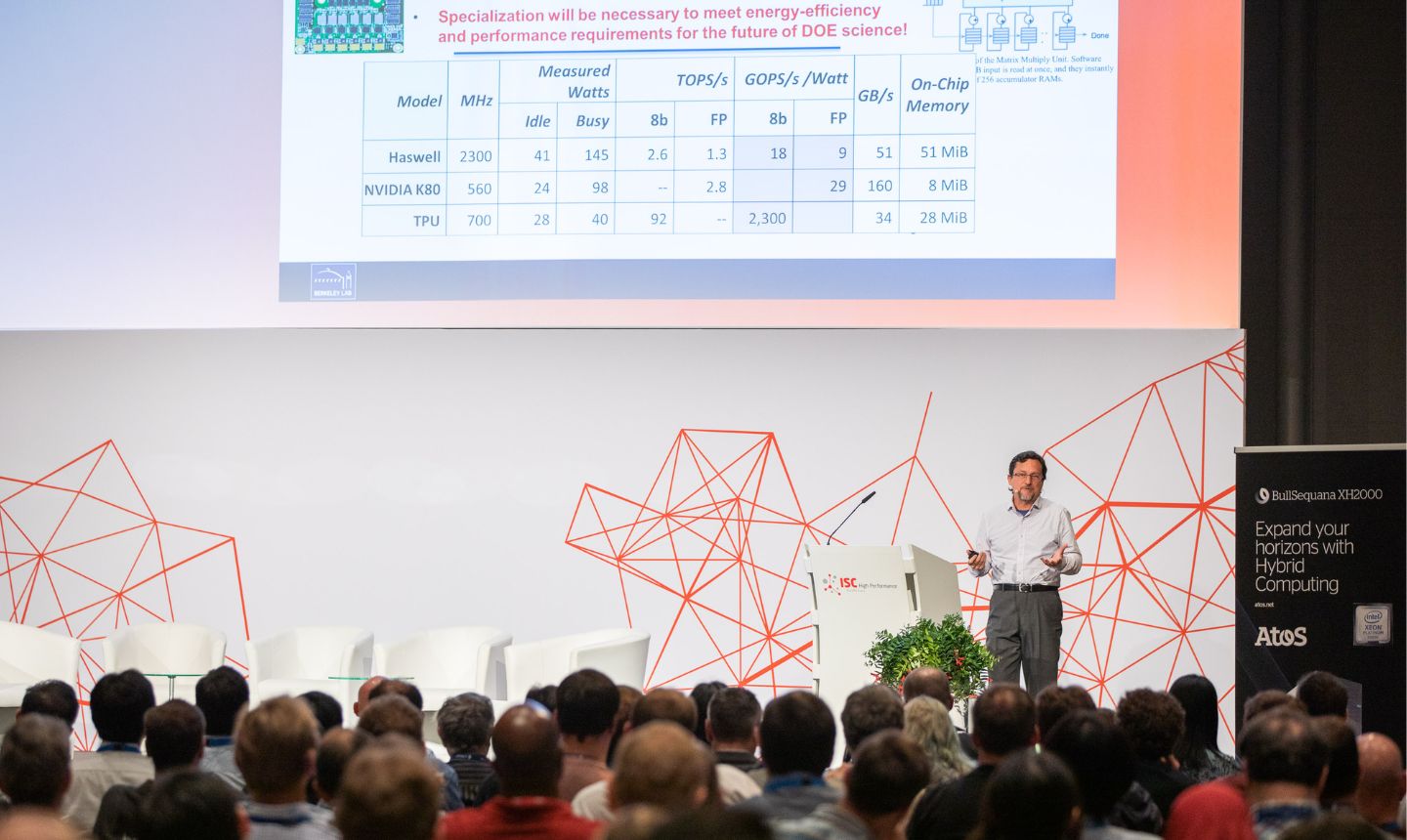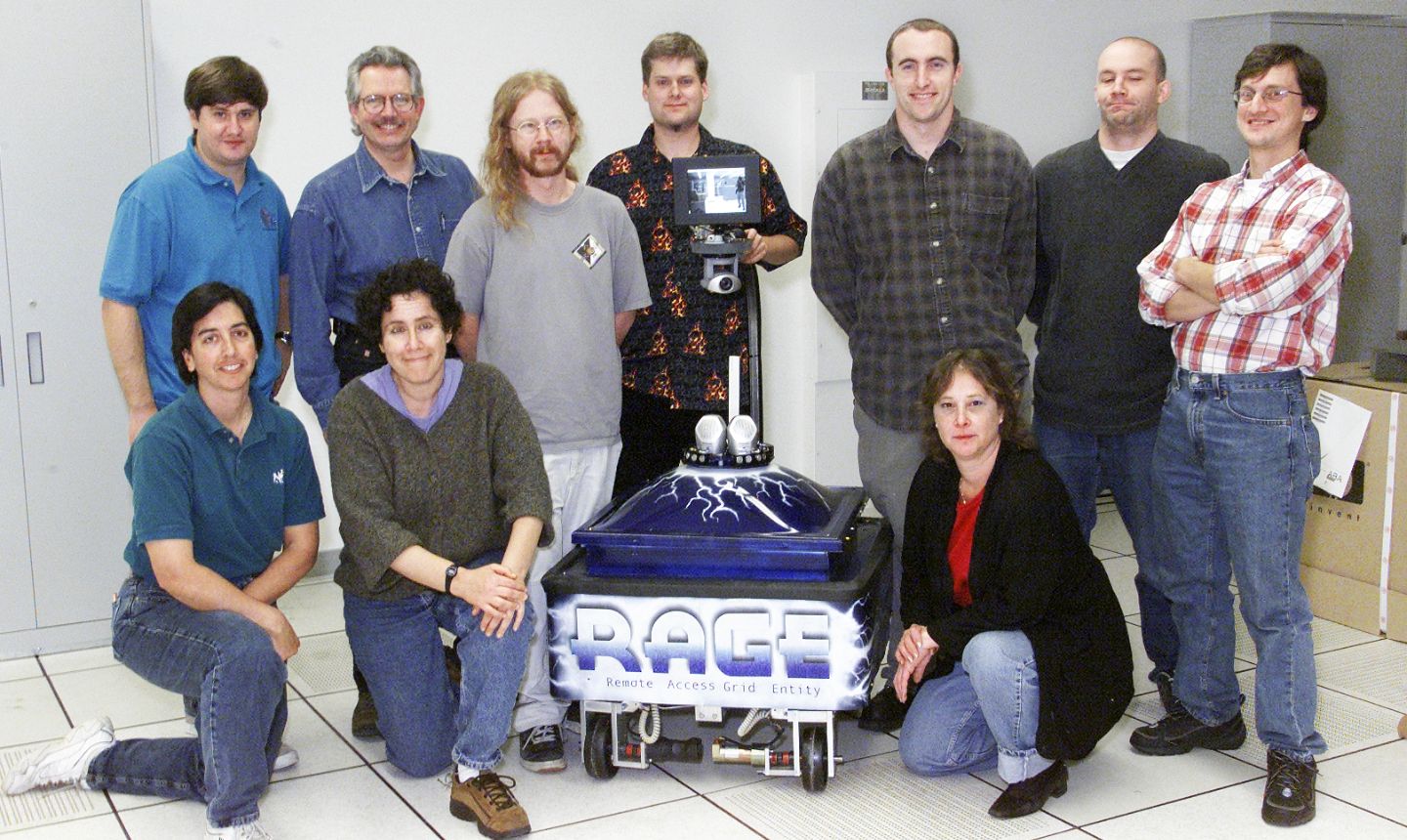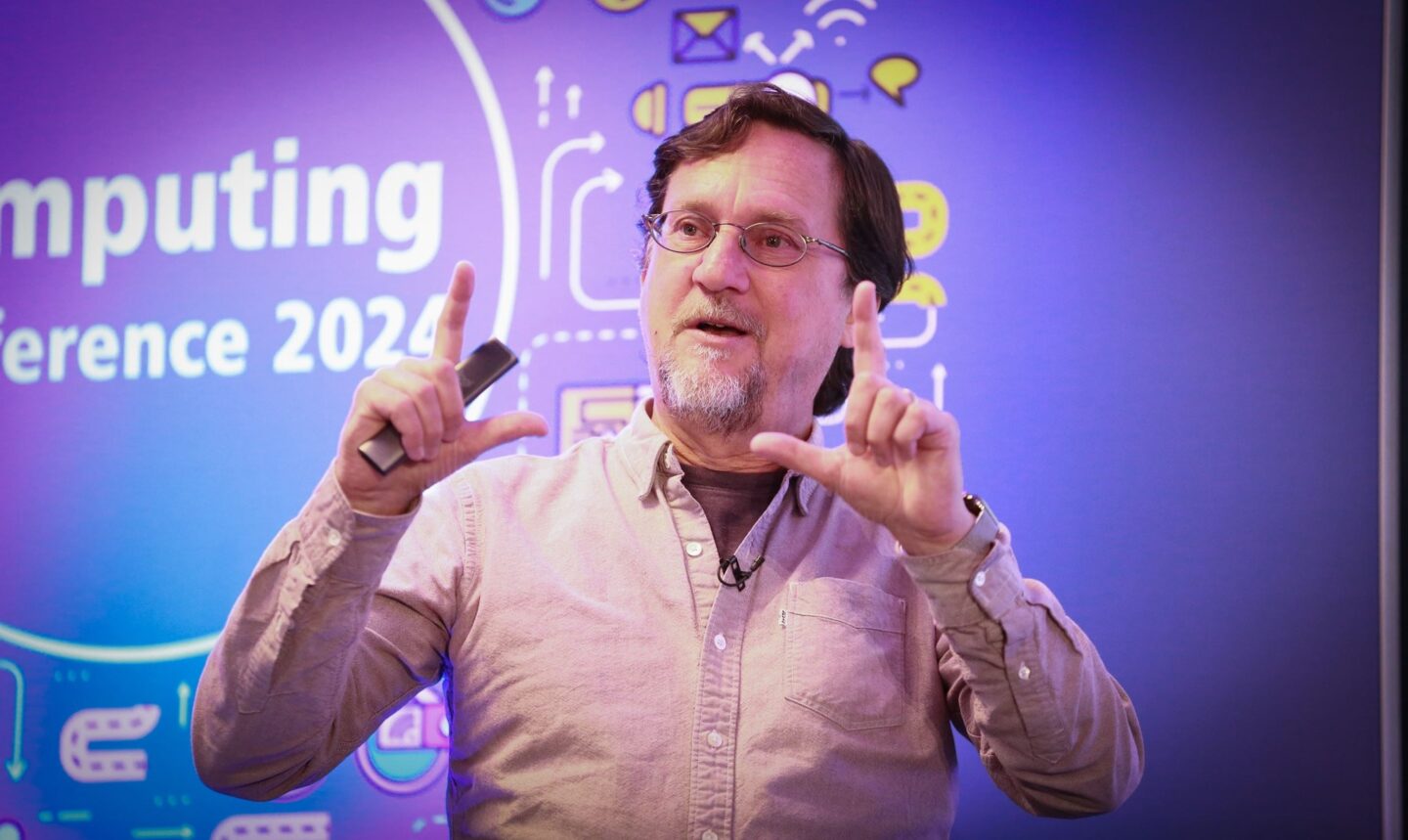John Shalf, Head of the Computer Science Department at Lawrence Berkeley National Laboratory (Berkeley Lab), has been awarded the 2025 Seymour Cray Computer Engineering Award for his visionary and cross-layer contributions to the codesign of energy-efficient high-performance computing (HPC) and hardware-software co-design. His longstanding leadership has advanced key scientific applications and future computing systems toward Exascale and beyond.
The Seymour Cray Computer Engineering Award is one of the IEEE Computer Society’s highest honors, presented in recognition of innovative contributions to HPC systems that exemplify the creative spirit of Seymour Cray. The award ceremony will be held at the SC25 Conference opening session in St. Louis, Missouri, on Tuesday morning, November 18, 2025.
“I am deeply honored to receive the Seymour Cray Computer Engineering Award. I’ve been fortunate to have had the opportunity to work in exciting environments surrounded by talented individuals who share my passion for advancing the field of HPC. This award is not just a recognition of my own contributions, but also a tribute to the collaborative spirit and innovative thinking that have driven our team’s work on energy-efficient HPC systems. As we build on the foundation of exascale computing, I’m excited to see the new scientific discoveries and applications that will emerge, and I’m proud to have been a part of this journey,” said Shalf.
Redefining Power Efficiency for Scientific Discovery

Throughout his career, Shalf has actively championed hardware/software codesign, advocating for HPC systems designed around application requirements—a methodology long used in embedded systems but not in commercial HPC platforms.
His research on energy-efficient computing, including the Green Flash and Green Wave projects, has significantly shaped strategies for reducing power consumption in HPC. The Green Flash project enabled kilometer-scale climate modeling for the U.S. Department of Energy (DOE), delivering breakthrough spatial resolution needed to accurately simulate cloud formation and atmospheric dynamics. Previously, such detailed simulations were too computationally demanding to be practical. By designing hardware and energy-efficient algorithms together, Green Flash made it possible to achieve important scientific goals—like detailed climate modeling—within practical limits for energy use and computing time. These efforts showed that codesign can lead to significant energy savings while enabling scientific breakthroughs that were previously impossible, inspiring the HPC community to pursue more sustainable and impactful research.
Building on past innovations, Shalf played a pivotal role as Deputy Director for Hardware Technology on DOE’s Exascale Computing Project (ECP), helping shape strategies for energy-efficient, application-focused system design in HPC. He is now at the forefront of research on chiplets—advanced packaging technologies that enable modular and specialized architectures for science—working to revolutionize HPC beyond the exascale era. Chiplets offer a promising solution for integrating science-relevant specialization into mainstream platforms, advancing energy efficiency, scalability, and performance. Shalf collaborates closely with the Open Compute Project and the Heterogeneous Integration Roadmap (HIR) effort to develop industry standards and roadmaps, partnering with hyperscalers and industry leaders to accelerate open chiplet adoption.
Over the years, Shalf has co-authored over 100 peer-reviewed articles in parallel computing software and HPC technology, including the widely cited report “The Landscape of Parallel Computing Research: A View from Berkeley” with Turing Award winner David Patterson, formerly a UC Berkeley professor and Berkeley Lab faculty affiliate. This seminal work has shaped the research agenda, fostering the development of parallel computing systems, architectures, and applications that have propelled innovation in HPC. It remains a valuable resource for researchers and developers in the field.
Another notable paper is “The Cactus Code: A Problem-Solving Environment for the Grid,” which introduces the Cactus Computational Toolkit, a software framework for building parallel applications that has been widely adopted in fields such as gravitational physics and astrophysics. John and others co-created Cactus during his time at NCSA and as a visiting researcher at the Albert Einstein Institute / Max Planck Institute for Gravitation Physics in Germany.
Beyond software and codesign to innovative HPC networking and hardware architectures, he also led the development of the High-Fidelity Adaptive Streaming Transport architecture, which set new standards for data throughput and efficiency. His pioneering work in photonics enabled the development of reconfigurable interconnection networks, including the Hybrid Flexibly Assignable Switch Topology (HFAST), which was cited by Google as inspiration for their TPUv4 hybrid optical interconnect design. These novel technologies are now entering the mainstream of HPC.
Under his leadership, Berkeley Lab’s Computer Science Department drives breakthroughs in scientific applications and computing architectures, fostering collaborations that accelerate progress in scientific research. Before joining Berkeley Lab, he held research positions at both the National Center for Supercomputing Applications (NCSA) and the Max Planck Institute for Gravitational Physics (Albert Einstein Institute/AEI) in Germany. He has also chaired major conferences, including the inaugural IEEE Optical Interconnects Conference (2013) and the International Supercomputing Conference (ISC 2023), and has mentored dozens of scientists, further extending his impact on the HPC community.
“John’s contributions to the field of HPC have been transformative, and this award is a testament to his dedication and expertise toward advancing the field. We are thrilled to see John’s contributions recognized in this way, and we’re grateful for his leadership and vision in helping to shape the future of HPC,” said Stefan Wild, Director of Berkeley Lab’s Applied Mathematics and Computational Research Division.
In addition to the Seymour Cray Award, Shalf has been named an IEEE Fellow, selected as the 2024–2027 IEEE Electronics Packaging Society Distinguished Lecturer, recognized as a 2025 HPCwire HPC Legend, and received multiple commendations from the U.S. Department of Energy for his leadership in national computing initiatives. He has also won an R&D 100 Award for the Berkeley Lab/NERSC RAGE Robot (2002), was selected as one of the “Rockstars of HPC” by Inside HPC magazine in 2010, and has received three best paper awards and two nominations for best paper.

Shalf is an inventor on six patents, ranging from software methods to microarchitecture, all with practical applications in modern HPC systems. He has also served as an associate editor for IEEE Transactions on Computers and as an editor for the “Leadership Computing” department of Computing in Science and Engineering (CiSE) magazine.
“John’s passion for scientific computing and commitment to innovation have elevated Berkeley Lab’s impact in the global HPC community. His leadership not only drives technological advances but also inspires those around him to pursue bold ideas and collaborative solutions. The Seymour Cray Award reflects his remarkable contributions,” said Jonathan Carter, Associate Laboratory Director for Berkeley Lab Computing Sciences.
About Computing Sciences at Berkeley Lab
High performance computing plays a critical role in scientific discovery. Researchers increasingly rely on advances in computer science, mathematics, computational science, data science, and large-scale computing and networking to increase our understanding of ourselves, our planet, and our universe. Berkeley Lab's Computing Sciences Area researches, develops, and deploys new foundations, tools, and technologies to meet these needs and to advance research across a broad range of scientific disciplines.


